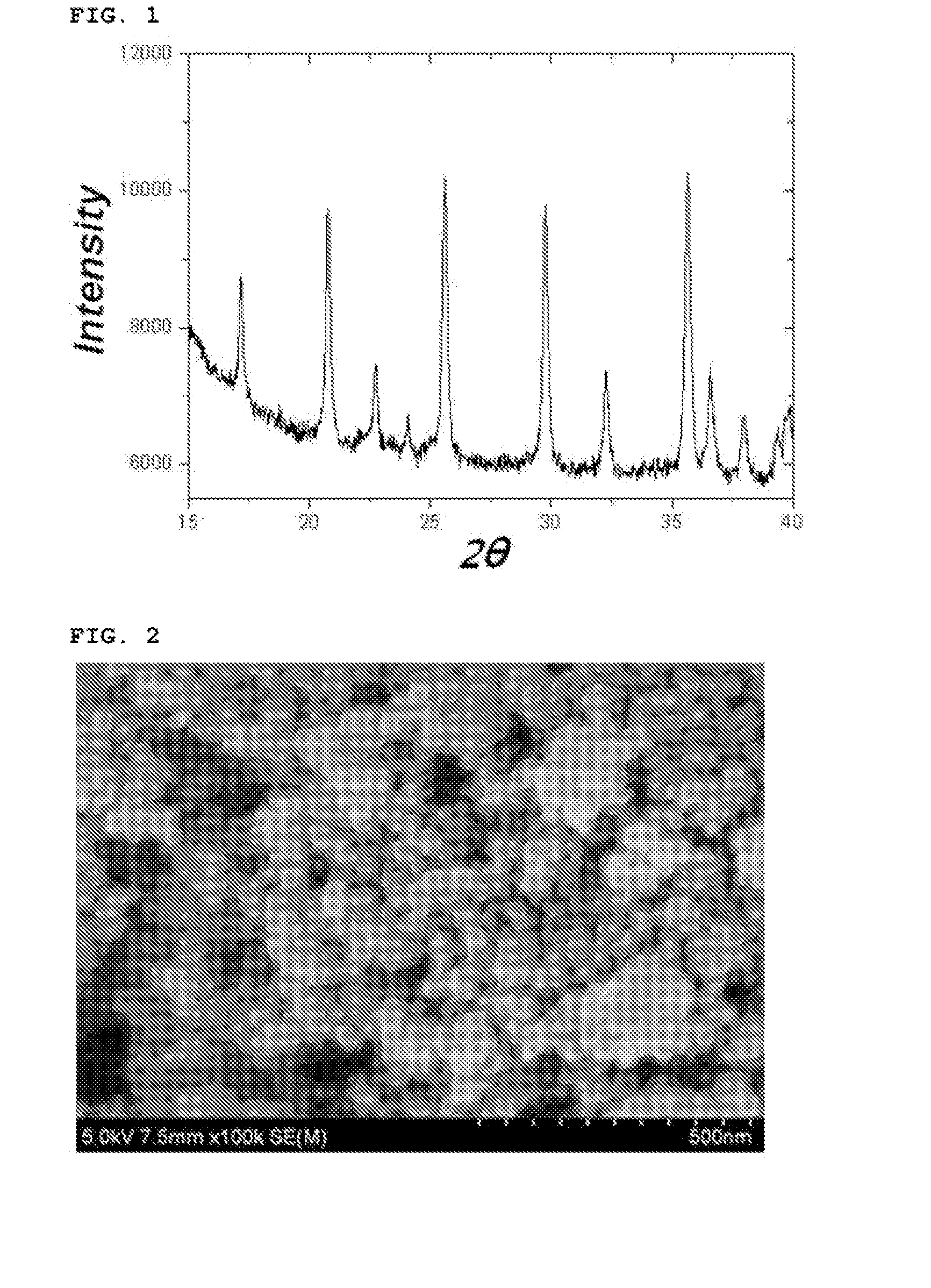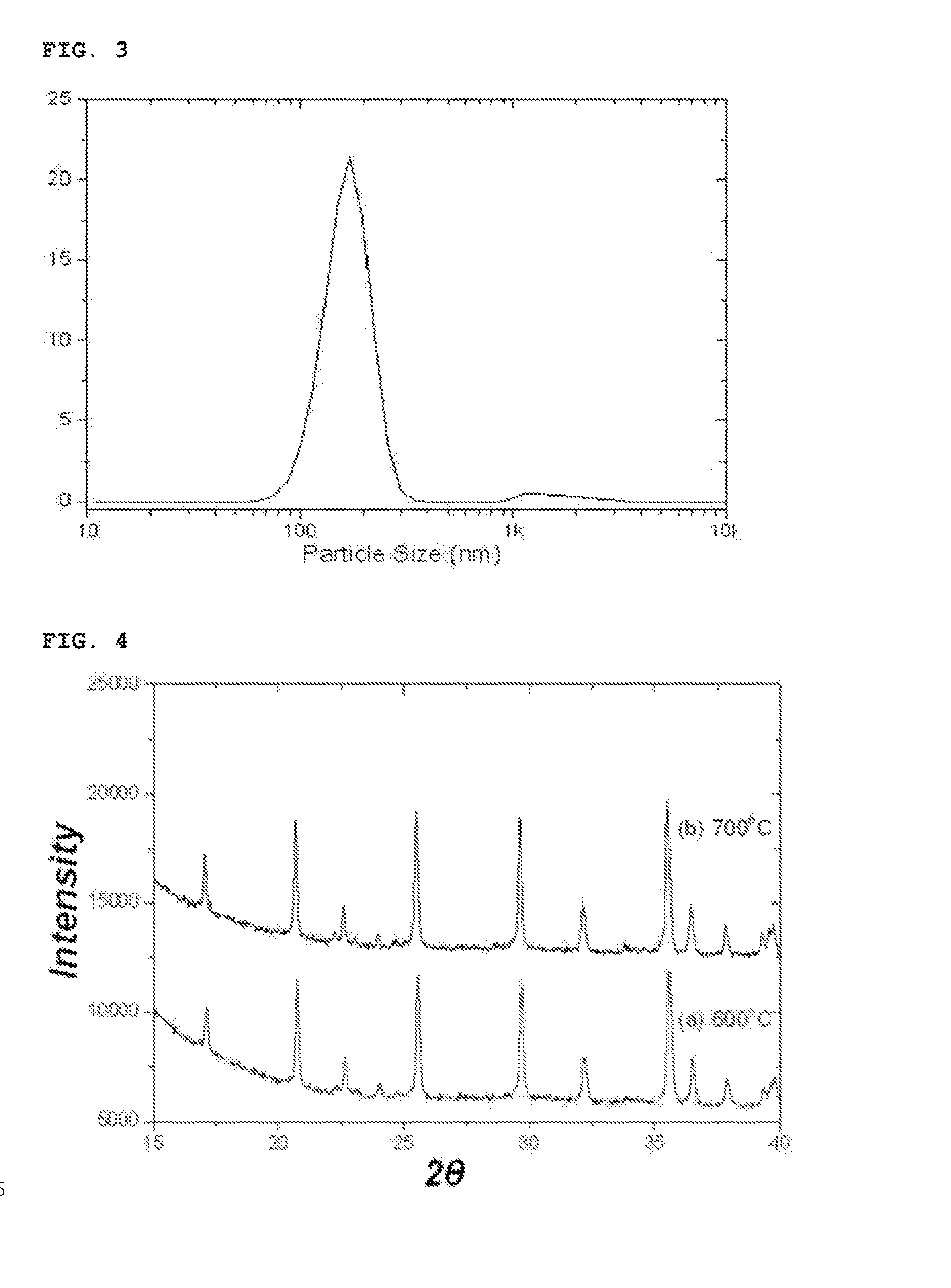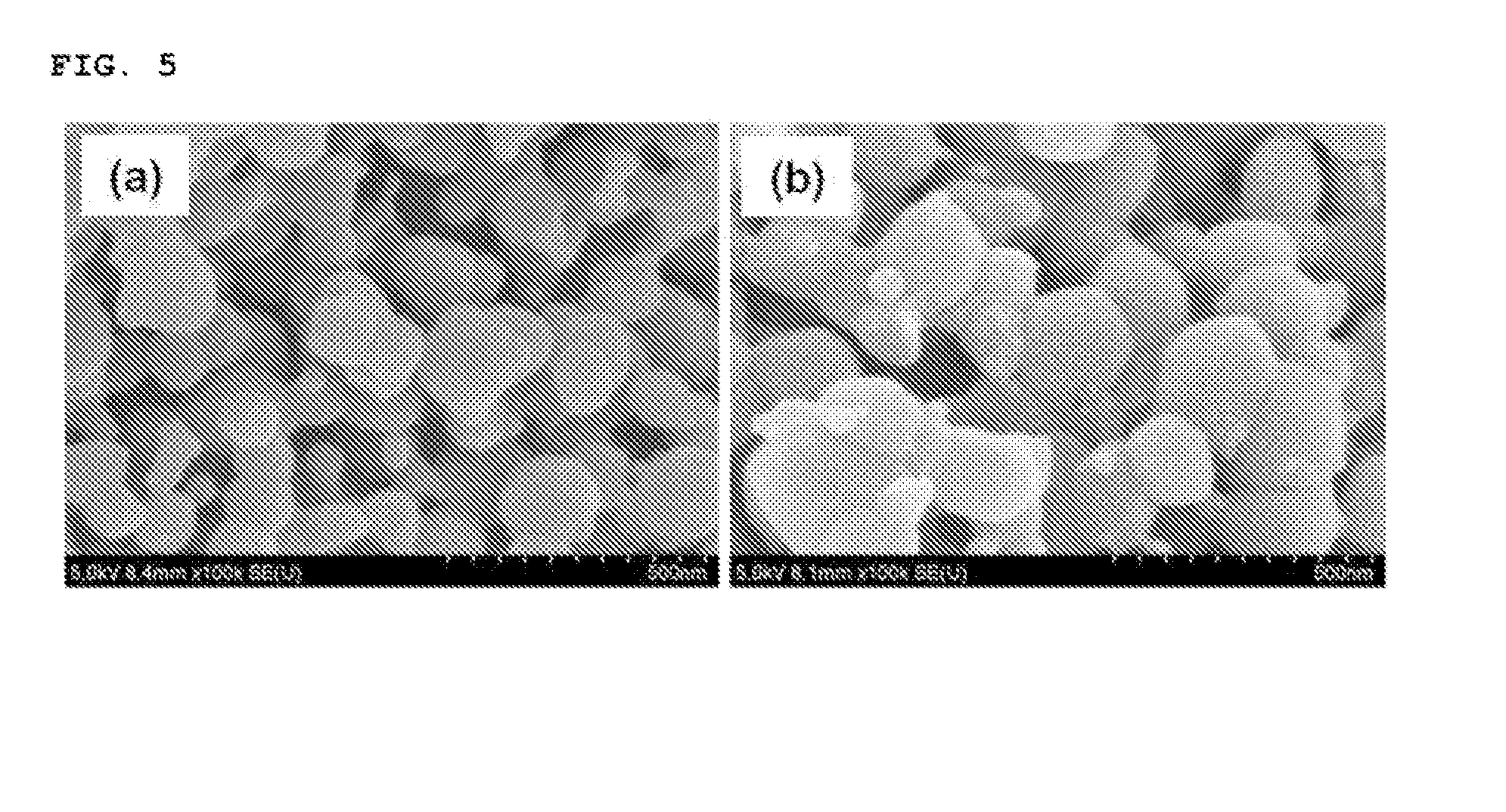Method for preparing lithium iron phosphate nanopowder
a lithium iron phosphate and nanopowder technology, applied in the direction of peroxide/peroxyhydrate/peroxyacid/superoxide/ozonide, conductive materials, etc., can solve the problems of difficult mass production of lithium secondary batteries including thereof, affecting the safety of lithium ion batteries, etc., and achieves good capacity and stability, process safety and economic feasibility
- Summary
- Abstract
- Description
- Claims
- Application Information
AI Technical Summary
Benefits of technology
Problems solved by technology
Method used
Image
Examples
example 1
[0089]1.44 g of lithium hydroxide (LiOH), 14.7 g of ferric citrate (FeC6H5O7) and 5.88 g of phosphoric acid (H3PO4) were added in 300 ml of triethanolamine and sufficiently stirred to prepare a mixture solution.
[0090]The sufficiently stirred mixture solution was put into a 500 ml reactor and a reaction was respectively performed at 230° C. for 24 hours.
[0091]After finishing the reaction, the remaining reactant was cooled and washed sequentially using acetone and methanol.
[0092]After washing, the product was dried using a vacuum drier.
[0093]After finishing the washing and drying, the reaction product thus obtained was analyzed with an X-ray diffraction spectroscopy and a scanning electron microscope. The reaction product was confirmed to be a lithium iron phosphate nanopowder having a pure olivine crystal structure and including a mixture of particle having particle sizes of 30 nm and 100 nm (See FIGS. 1 and 2).
[0094]In addition, the particle size distribution of the lithium iron pho...
examples 2a and 2b
[0095]The lithium iron phosphate nanopowder prepared in Example 1 was heat treated in a furnace at 600° C. (Example 2a) and at 700° C. (Example 2b), respectively to obtain a lithium iron phosphate nanopowder including a carbon coating layer formed thereon.
[0096]The reaction product thus obtained was analyzed with an X-ray diffraction spectroscopy and a scanning electron microscope. The reaction product was confirmed to be a lithium iron phosphate nanopowder having a particle size of 100 nm of pure olivine crystal structure when the heat treatment was performed at 600° C. (Example 2a), and a lithium iron phosphate nanopowder having a particle size of 150 nm of pure olivine crystal structure when the heat treatment was performed at 700° C. (Example 2b), respectively (See FIGS. 4 and 5).
[0097]As shown through the examples, the lithium iron phosphate nanopowder prepared by the method of the present invention has small and uniform particle size and good particle size distribution propert...
PUM
| Property | Measurement | Unit |
|---|---|---|
| Temperature | aaaaa | aaaaa |
| Temperature | aaaaa | aaaaa |
| Temperature | aaaaa | aaaaa |
Abstract
Description
Claims
Application Information
 Login to View More
Login to View More - R&D
- Intellectual Property
- Life Sciences
- Materials
- Tech Scout
- Unparalleled Data Quality
- Higher Quality Content
- 60% Fewer Hallucinations
Browse by: Latest US Patents, China's latest patents, Technical Efficacy Thesaurus, Application Domain, Technology Topic, Popular Technical Reports.
© 2025 PatSnap. All rights reserved.Legal|Privacy policy|Modern Slavery Act Transparency Statement|Sitemap|About US| Contact US: help@patsnap.com



